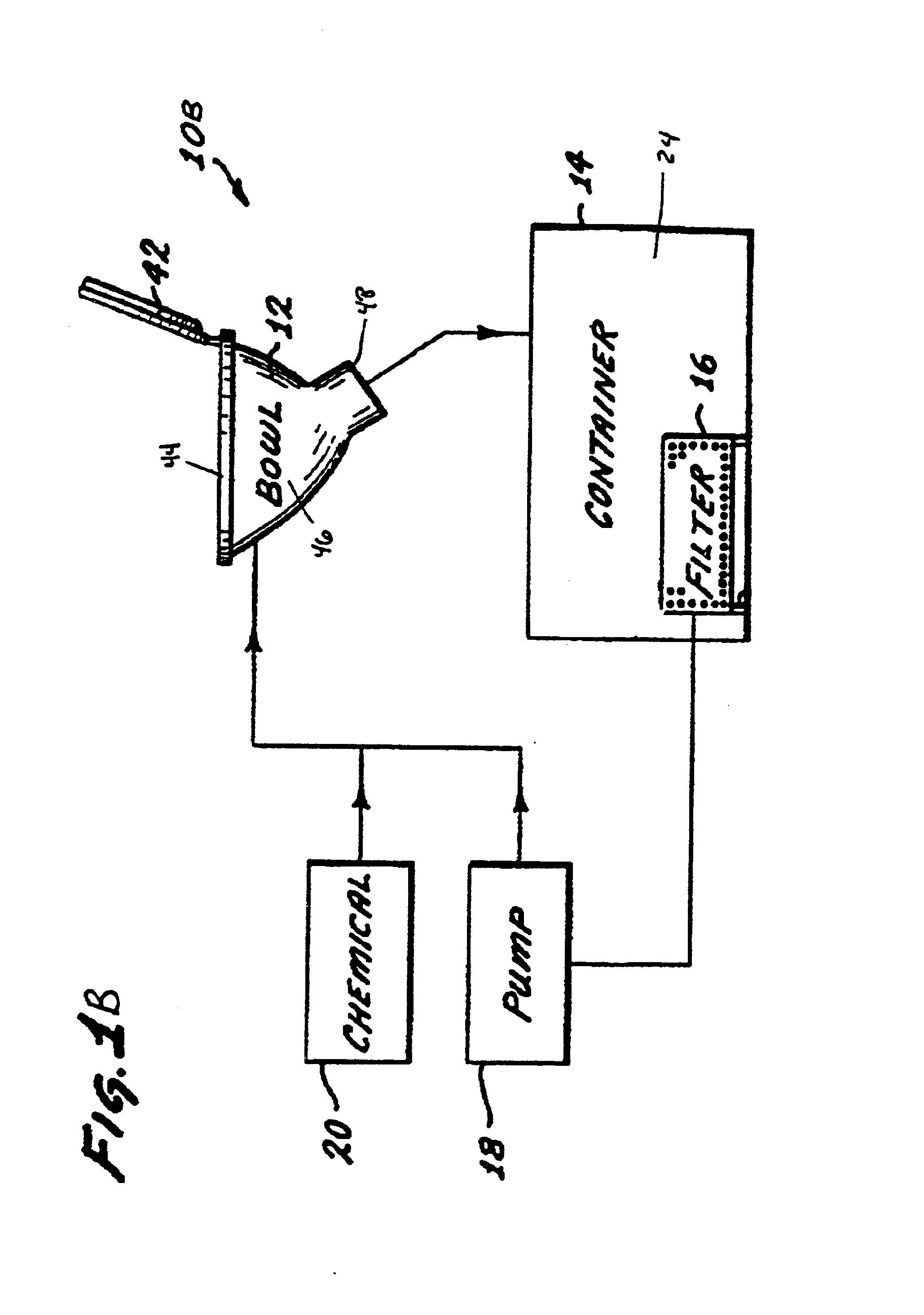Method for bacterially treating tank toilet systems and apparatus for using same
a technology for toilets and bacteria, applied in the field of bacterially treating tank toilet systems and apparatus for using same, can solve the problems of restricting the use of formaldehyde and glutaraldehyde, irritating the skin, and preventing the use of small-tank toilet systems
- Summary
- Abstract
- Description
- Claims
- Application Information
AI Technical Summary
Problems solved by technology
Method used
Image
Examples
example 2
The powder form composition of Example 1 was tested over a three-day period with a single charge in a small-tank toilet system on a commuter train car of an American railroad passenger line. Before treatment, the tank was drained of its fluids and recharged with clean flushing fluid. The powder form composition was then added to the system by depositing the powder into the toilet bowl of the system and flushing the toilet. The toilet system was then operated under normal commuting conditions. Throughout the testing period, the flushing fluid and the toilet system were analyzed, which analysis reflected the collected materials were substantially eliminated and the odors of the collected materials were significantly diminished. Moreover, the color of the fluid remained a constant shade of blue throughout the test. When the flushing fluids were thereafter drained from the small-tank toilet system, the fluid was remarkably clearer and cleaner than the flushing fluids recovered from a st...
example 3
A liquid form composition was mixed in the following proportions:
All of the materials were blended together and placed inside a pouch for containing liquids. This blend was found to have a good shelf life for use in small-tank toilet systems. The liquid composition was tested in a small-tank toilet system and again received excellent results similar to the powder composition.
example 4
The liquid form composition of Example 3 was tested over a fourteen-day period with a single charge in a small-tank toilet system on a temporarily decommissioned train car of an American railroad passenger line. The purpose of this test was to evaluate an unusually long period of time for holding the flushing fluid and to view what happens internally in the toilet system. Fourteen days is a substantially longer period of holding time than generally used for small-tank toilet systems, without recharging.
Before treatment, the tank was drained of its flushing fluids. An optical camera was utilized to view the interior of the small tank prior to treatment. This view revealed a great deal of build up of accumulated grease materials throughout the small tank, especially on its walls.
The small tank was then charged with clean flushing fluid. The liquid form composition was added to the system by depositing the liquid into the toilet bowl and flushing the toilet. The toilet system was opene...
PUM
 Login to View More
Login to View More Abstract
Description
Claims
Application Information
 Login to View More
Login to View More - R&D
- Intellectual Property
- Life Sciences
- Materials
- Tech Scout
- Unparalleled Data Quality
- Higher Quality Content
- 60% Fewer Hallucinations
Browse by: Latest US Patents, China's latest patents, Technical Efficacy Thesaurus, Application Domain, Technology Topic, Popular Technical Reports.
© 2025 PatSnap. All rights reserved.Legal|Privacy policy|Modern Slavery Act Transparency Statement|Sitemap|About US| Contact US: help@patsnap.com



